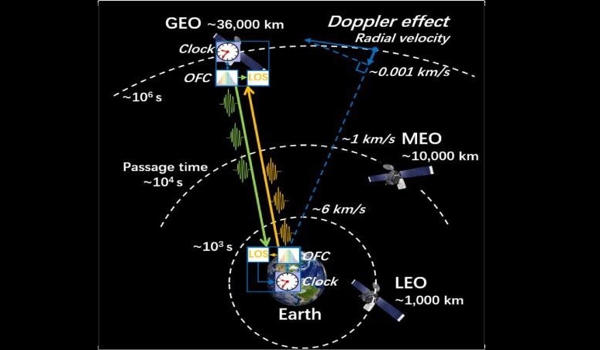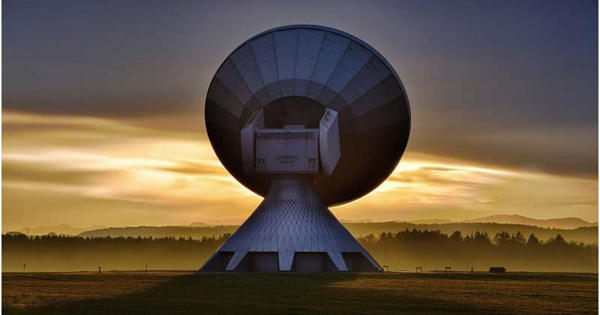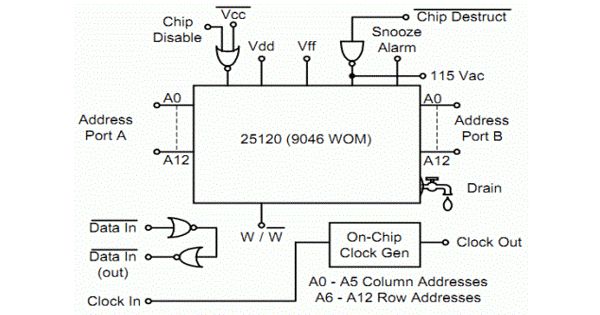Prof. Pan Jianwei and colleagues from the Chinese Academy of Sciences University of Science and Technology of China investigated high-loss free space, high-precision time-frequency dissemination between remote locations, simulating high-precision time-frequency high-orbit satellite-ground links in the channel loss, atmospheric noise, and transmission delay effects.
Accurately measuring time and frequency is paving the way for far-reaching applications in fields such as communications, navigation, and geodesy. This link experiment shows that the instability of time-frequency transfer via a satellite in middle-high earth orbits can reach 10-18 at 10,000 s, allowing optical atomic clocks to perform and ground clocks to be compared across continents. The results of the study were published in the journal Optica.
Scientists investigated the high-loss free space, high-precision time-frequency dissemination between remote locations, simulating high-precision time-frequency high-orbit satellite-ground links in the channel loss, atmospheric noise, and transmission delay effects.
Techniques for high-precision time-frequency dissemination and comparison are used in all types of large-scale precision measurement systems. The international metrology standard systems are currently in the quantization stage. Precision measurement and international metrology systems rely on frequency standards. Other fundamental physical quantities, with the exception of the amount of matter (mol), are directly or indirectly related to frequency. On the other hand, novel optical frequency standard technologies are rapidly developing, with accuracy two orders of magnitude higher than the original second definition frequency standard.
The most important aspect of the second definition’s technical roadmap is to set the intercontinental time-frequency comparison with the optical frequency standard at the 10-18 level. It is an unsolved problem to have an ultra-long-distance high-precision time-frequency comparison or dissemination, while the satellite-ground link is recognized as the most feasible solution.

The observation of our Earth, which in its daily rotation and yearly orbit around the sun defines the rhythm of our day and time periods of our lives, has always been closely related to the measurement of time. Thus, over centuries, the definition of time was based on our Earth’s celestial motion, which served as a stable long-term frequency reference. Man-made frequency standards such as hourglasses, pendulum clocks, and later spring-based clocks were used to measure short time intervals.
The researchers used a dual-comb linear optical sampling time measurement method in this study. When compared to the continuous-wave or single-photon link methods, this complex link has a higher time resolution and a wider ambiguous range.
The researchers first thoroughly examined parameters such as satellite-ground link loss, Doppler effect, link time asymmetry, and atmospheric noise, and discovered that high-orbit links enable more stable time-frequency comparison or dissemination due to their long duration, large common view range, and lower relativistic effects. The researchers then conducted a high-orbit satellite-ground time-frequency transmission experiment to simulate links with link loss, atmospheric noise, and delay effects.
The researchers built a 16-kilometer horizontal atmospheric free space and high-precision dual-comb time-frequency transmission link in Shanghai using low-noise optical comb amplification, a low-loss high-stability dual-comb interference optical path, and high-precision high-sensitivity linear sampling. At 3,000 s, the frequency transmission link experienced an instability of 4 10-18, with an average loss of 72 dB and a link delay of 1 s.
Based on these findings, they predicted that the time-frequency transfer instability via a high-orbit satellite-ground link could reach 10-18 at 10,000 s.
Short-term phase stability is required for precise frequency users, but long-term phase synchronization may not be required. Radar and microwave communication systems multiply 5- or 10-megahertz frequency standards all the way up into the gigahertz range of the spectrum. Any phase noise from the frequency standard is multiplied with the fundamental frequency and appears in the microwave carrier as noise. To maintain sufficient spectral purity and low noise in their transmitted signals, precise frequency users may require time interval signals with phase noise on the order of one picosecond (10-12 or one trillionth of a second).
















